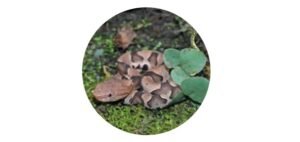How to Grow Baby's Breath? All You Need To Know
Table of Contents
How to Grow Baby's Breath? The Ultimate Guide
Baby’s Breath plants due to their beautiful appearance have become common in floral decoration and arrangements. They are also preferred as garden varieties.
The genus Gypsophila comprises many perennial and annual species numbering more than 100 and that have varied phenotypes.
Some of Baby’s Breath are creepers that can provide a lucrative ground cover of flowers. While others grow in contained molds in an upright manner and are characterized by slender stems and extensive branches that make it feel airy and light.
Baby’s Breath’s narrow leaves may be small and vary from gray-green to blue-green. The plants bloom in summer and are 5-petaled and in color may be pink or white.
These small flowers may remain blooming for several weeks. During this time they lure pollinators like butterflies. Baby’s Breath should be planted in the spring season and grow at a fast rate.
Baby’s Breath may grow well in well-drained alkaline soil up to 2-3 feet in height. They require full sun exposure and have hardiness zones 3-9.
Baby’s Breath plants are native to Australia, Africa, Europe, and Asia. They may be toxic to pets and animals.
Baby's Breath Care
These plants need little maintenance. If they are planted in a good spot where the soil has good drainage and they are exposed to ample sunlight then they require little care and may grow well on their own.
Baby’s Breath also are less likely to get infested with pests and get affected by various diseases. You need to take care of their water requirements during dry spells. As they age they might require support to avoid flopping over.
You can utilize garden stakes to support them and can install them proactively at the time of planting.
Though they don’t require deadheading, some amount of pruning after bloom can be beneficial and may help promote another flowering and also maintain their shape.
What I Need to Grow Baby's Breath
Light: Baby’s Breath require full sunlight so it is critical that they get at least 6 hours of sunlight every day. They can tolerate shade even in the hot afternoon sun. But if they get too much shade their growth will be affected leading to poor flowering and leggy plants.
Soil: Baby’s Breath plants can be grown in a variety of soil types that have good drainage. Sandy soil works best for them while wet clay may not be preferable for their cultivation. If your garden has heavy soil, you can plant them in containers or raised garden beds. If your garden has acidic soil it is better to apply some garden lime to raise its alkalinity.
Water: Baby’s Breath need to be watered less and can also grow well in dry skin. In the case of young plants, the soil should be kept moderately moist. After they mature watering won’t be required but only is essential in an extended drought period. If you overwater them they may ultimately die or may cause the root to rot.
Temperature and Humidity: Baby’s Breath may be tolerant to a variety of temperature ranges within their growing zone. Some of its varieties may be tolerant to cold. They grow well in a dry climate rather than a humid one. If you live in high humidity regions then make sure to plant them in well-drained soil, and constant moisture conditions may need to be avoided.
Fertilizer: Baby’s Breath are not heavy feeders and thus, should not be fed fertilizers in greater quantity as they can cause floppy growth. Compost may work well for them to profuse blooms and in healthy growth. Baby’s Breath can be incorporated into the soil each spring.
Baby's Breath Varieties
The genus to which they belong has various varieties that are popular trade. Below such common varieties are given:
Gypsophila elegans: This annual species may self-seed and may bloom year after year. Compared to other varieties they bloom large flowers.
Gypsophila paniculata ‘Bristol Fairy’: These exhibit double white blooms that are a quarter-inch wide. These cultivars can be grown in mounds and when they are fully grown they measure up to 2-3 feet.
Gypsophila paniculata ‘Compacta Plena’: This compact variety has flowers similar to the above variety but may grow up to 15-18 inches in height and can be grown in mounds.
Gypsophila paniculata ‘Perfekta’: These flowers resemble Bristol Fairy but are twice their size and grow up 3 feet tall and wide.
Gypsophila paniculata ‘Viette’s Dwarf’: This cultivar is a compact variety that can measure up to 12-15 inches and doesn’t need staking. Their double blooms are pink initially but then become white as they fade.










